Click below to jump to an article of interest.
Advancing Hydrogen Fuel Storage Techniques
In addition to the new collaborative program with the University of Texas at Austin, SwRI is continuing its long support for a similar program with The University of Texas at San Antonio. The Connecting through Research Partnerships Program, known as "Connect," recently funded a program to improve storage materials for hydrogen fuels with a hybrid metal-carbon microstructure that combines both chemical and physical hydrogen storage mechanisms. Supported by a $125,000 Connect grant, Dr. Josh Mangum of SwRI's Mechanical Engineering Division, UTSA Associate Professor of Physics and Astronomy Dr. Kathryn Mayer, and UTSA Assistant Professor of Chemistry Dr. Fang Xu are leading the project.
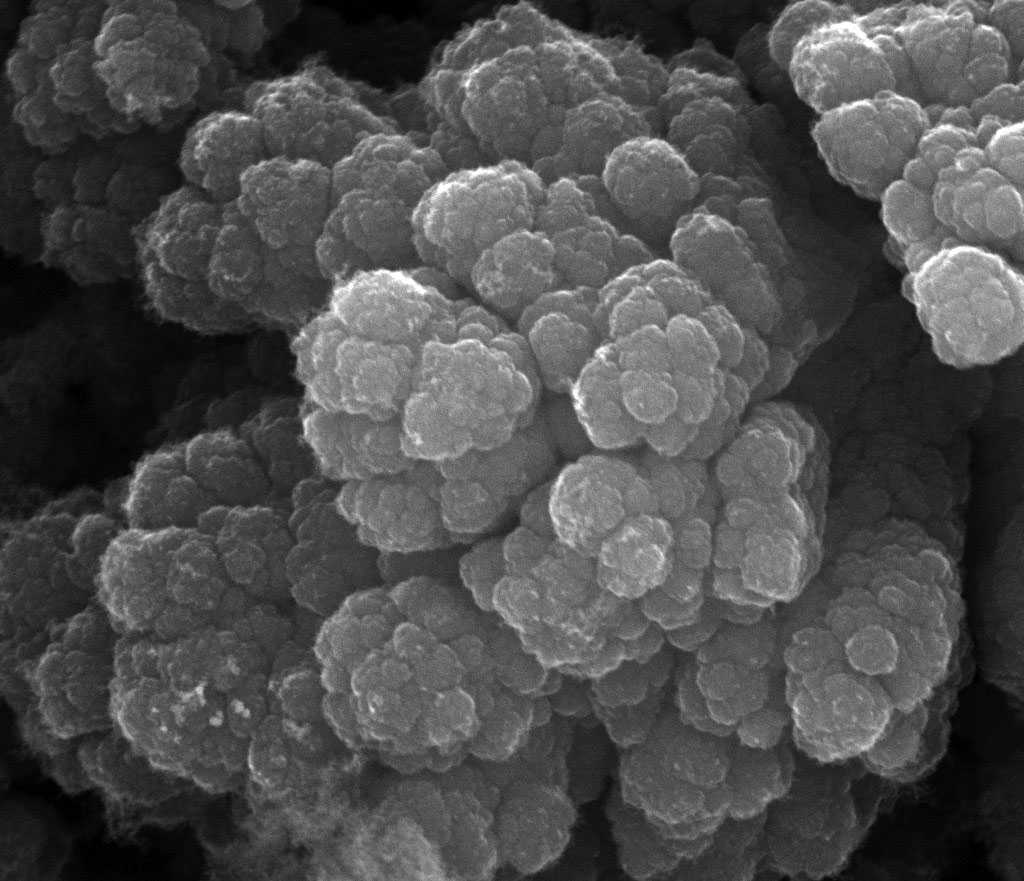
Hydrogen fuel is an attractive alternative to fossil fuels because its emissions are free from carbon byproducts. SwRI is leading several multidisciplinary efforts evaluating hydrogen as a potential fuel for automobiles, power generation and even as a replacement for natural gas in homes.
"While hydrogen energy is very promising, several hurdles must be overcome," Mangum said. "Some of the chief challenges are transportation and storage."
Currently, hydrogen gas is compressed and liquefied for transport and storage in cryogenic and high-pressure fuel tanks, which is an expensive process. Because hydrogen is highly flammable, transporting these tanks is inherently dangerous.
To address these challenges, SwRI and UTSA will create high surface area carbon (HiSAC) microstructure particles to physically and chemically absorb the hydrogen for safe, cost-effective transport.
"Instead of a highly pressurized tank, we plan to store hydrogen in a low-cost powder material," Mangum explained. "The hydrogen will be chemically and physically absorbed and desorbed. One of our project goals is evaluating how much hydrogen can be stored in the powder as this will dictate the overall storage cost."
The researchers will fabricate the HiSAC microstructures using SwRI-developed High Power Impulse Plasma Source (HiPIPS) technology, which efficiently generates coatings using high-density, high-flux plasmas at low temperatures and atmospheric pressures. R&D Magazine recognized SwRI's HiPIPS technology as one of the 100 most significant innovations of 2017.
UTSA will perform the analytical characterization of the microparticle structures. Mayer's research team will perform a detailed structural characterization of the materials using state-of-the-art instrumentation in the Kleberg Advanced Microscopy Center. Xu's team will modify HiSAC particles using magnesium deposition and test the materials' hydrogen storage capacity.
"Previous research has demonstrated HiSAC microstructures at high temperatures and low pressures, but HiPIPS allows us to form these materials at room temperature in a simple, scalable process," Mangum said. "The process uses less energy than it takes to power an incandescent light bulb."
SwRI's Executive Office and UTSA's Office of the Vice President for Research, Economic Development and Knowledge Enterprise sponsor the Connect program, which offers grant opportunities to enhance greater scientific collaboration between the two institutions.
SwRI Synthesizes Anti-Nausea Compound
SwRI has developed an efficient, fully synthetic method to produce scopolamine, a plant-derived compound used to prevent nausea and vomiting from motion sickness and anesthesia. The accomplishment marks the first time SwRI has fully synthesized a drug compound that is derived from plants.
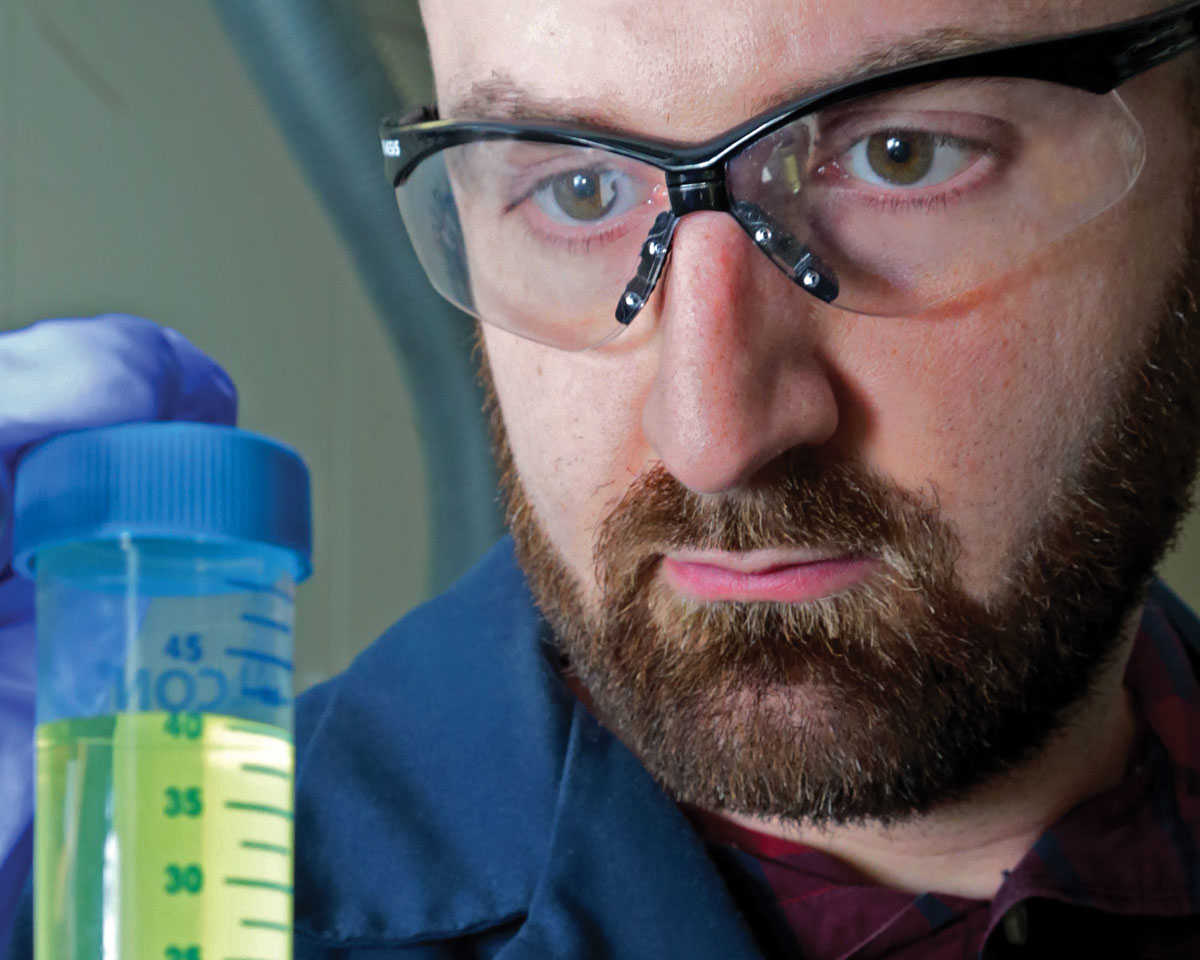
The anti-nausea medication is made from plants in the nightshade family and from the corkwood tree native to Australia. Although these plants are toxic, extracts have been used for centuries in herbal medicine. Scopolamine is typically delivered using transdermal patches placed on the skin and intravenously during surgery to prevent nausea.
"Half of all drugs are derived from natural compounds," said Dr. Shawn Blumberg, a senior research scientist in SwRI's Chemistry and Chemical Engineering Division. "Wildfires, inclement weather, pests, plant diseases and even climate change can significantly decrease crop yields, affecting the availability and price of plant-based medicines. Developing a fully synthetic version of scopolamine decreases our reliance on medicinal crops and will increase availability, allowing us to investigate other uses."
SwRI used internal research funding to develop a novel synthetic pathway for scopolamine production using inexpensive materials. Although the process for synthesizing compounds is typically lengthy and complex, the SwRI technique achieved the highest yield to date using a short number of steps in a process that can be scaled up indefinitely.
In addition to their current uses, scopolamine, atropine and other derivatives from nightshades may be useful countermeasures for nerve agent exposure. However, the current high demand for scopolamine coupled with limited agriculture-based production rates has made it difficult to explore other uses for the compound. SwRI will pursue other therapeutics based on these compounds and novel derivatives.
"Developing the technology to create synthetic alternatives to natural drugs will help bring prices down and make us less vulnerable to geopolitical and environmental disruption of the supply chain," Blumberg said.
Smart Solar Data Processing
Big data has become a big challenge for space scientists analyzing vast datasets from increasingly powerful space instrumentation. To address this, an SwRI team has developed a machine learning tool to efficiently label large, complex datasets to allow deep learning models to sift through and identify potentially hazardous solar events. The new labeling tool can be applied or adapted to address other challenges involving vast datasets.
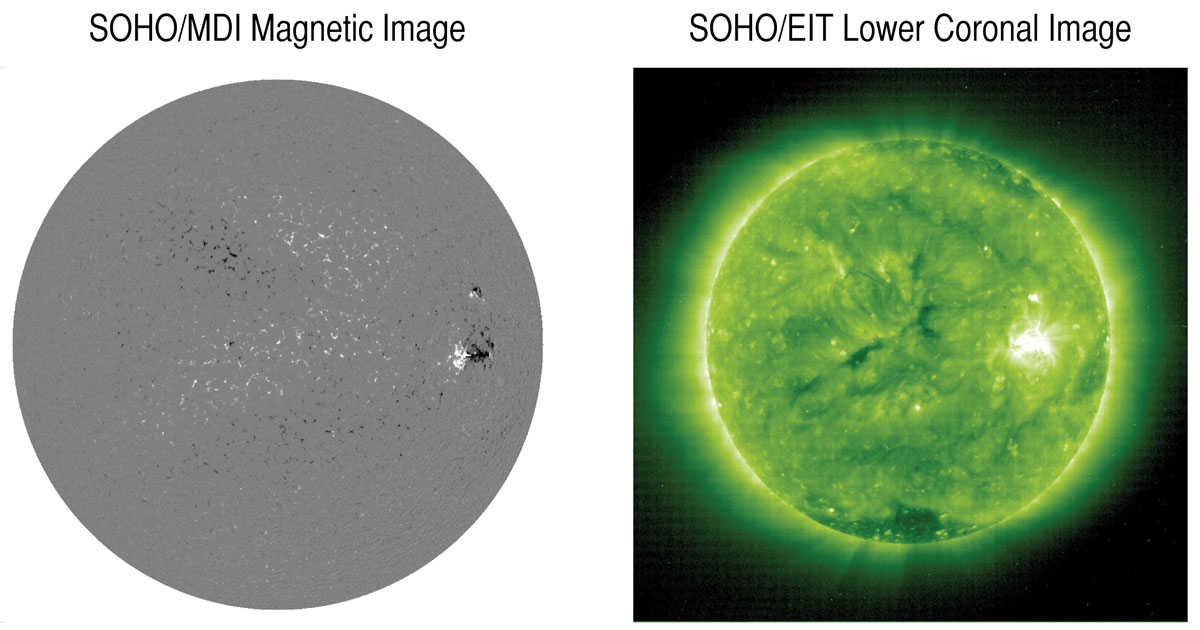
Courtesy of NASA/ESA
Using Solar and Heliospheric Observatory data, SwRI developed a tool to efficiently label large, complex datasets, such as the magnetogram shown at left, to allow a machine learning application to identify potentially hazardous solar events illustrated by the ultraviolet image at right.
As space instrument packages collect increasingly complex data in ever-increasing volumes, it is becoming more challenging for scientists to process and analyze relevant trends. Machine learning (ML) is becoming a critical tool for processing large complex datasets, where algorithms learn from existing data to make decisions or predictions that can factor more information simultaneously than humans can. However, to take advantage of ML techniques, humans need to label all the data first — often a monumental endeavor.
"Labeling data with meaningful annotations is a crucial step of supervised ML. However, labeling datasets is tedious and time-consuming," said Dr. Subhamoy Chatterjee, a postdoctoral researcher at SwRI. "New research shows how convolutional neural networks (CNNs), trained on crudely labeled astronomical videos, can be leveraged to improve the quality and breadth of data labeling and reduce the need for human intervention."
Deep learning techniques can automate processing and interpret large amounts of complex data by extracting and learning complex patterns. The SwRI team used videos of the solar magnetic field to identify areas where strong complex magnetic fields, the main precursor of space weather events, emerge on the solar surface.
"We trained CNNs using crude labels, manually verifying only our disagreements with the machine," said co-author Dr. Andrés Muñoz-Jaramillo, an SwRI solar physicist with expertise in machine learning. "We then retrained the algorithm with the corrected data and repeated this process until we were all in agreement. While flux emergence labeling is typically done manually, this iterative interaction between the human and ML algorithm reduces manual verification by 50%."
Testing Valves For Hydrogen Fuel Tanks
SwRI developed a new test stand to evaluate the durability of fuel tank valves for hydrogen-powered vehicles. The work is part of a National Highway Traffic Safety Administration (NHTSA) initiative to evaluate current testing standards for pressurized hydrogen tank valves.
In recent years, demands for hydrogen research have increased as industry searches for alternatives to burning fossil fuels, which contributes to climate change. SwRI is leading several multidisciplinary efforts to evaluate hydrogen as a potential fuel source for automobiles and power generation and to replace natural gas in homes.
"Advances in hydrogen-powered vehicles have led to an increased need for evaluating fuel tank components pressurized with hydrogen gas," said SwRI Research Engineer Jacqueline Manders. "The transportation industry must ensure that tanks and associated components are safe and reliable prior to use on the road."
Manders led the development of a test stand to perform pressure integrity testing on valves and flow components with hydrogen gas, while meeting safety requirements. The test stand is designed to achieve pressures as high as 20,000 psi, with temperature control capabilities ranging from -40 to 240 degrees Fahrenheit.
The current test program is evaluating and providing feedback on a series of tests for primary closure components on compressed hydrogen storage systems, as specified in a worldwide standard.
"The test stand could eventually support future integrity testing of components for the hydrogen industry, improving component reliability," Manders said. "With increased demand for hydrogen research, it's imperative that we evaluate current test procedures and ensure that these products are qualified to an acceptable standard."
The temperature and pressure extremes are meant to exceed the recommended operating range of the hydrogen valves, conservatively qualifying them for global climate conditions. The test stand is now in operation, allowing the Institute to test hydrogen valves for NHTSA as well as other clients.
Mapping Sulfur Residue On Europa
An SwRI-led team used the Hubble Space Telescope to observe Jupiter's moon Europa at ultraviolet wavelengths. The team's near-global UV maps show concentrations of sulfur dioxide on Europa's trailing side and filled a gap in the various wavelengths used to observe this icy water world.
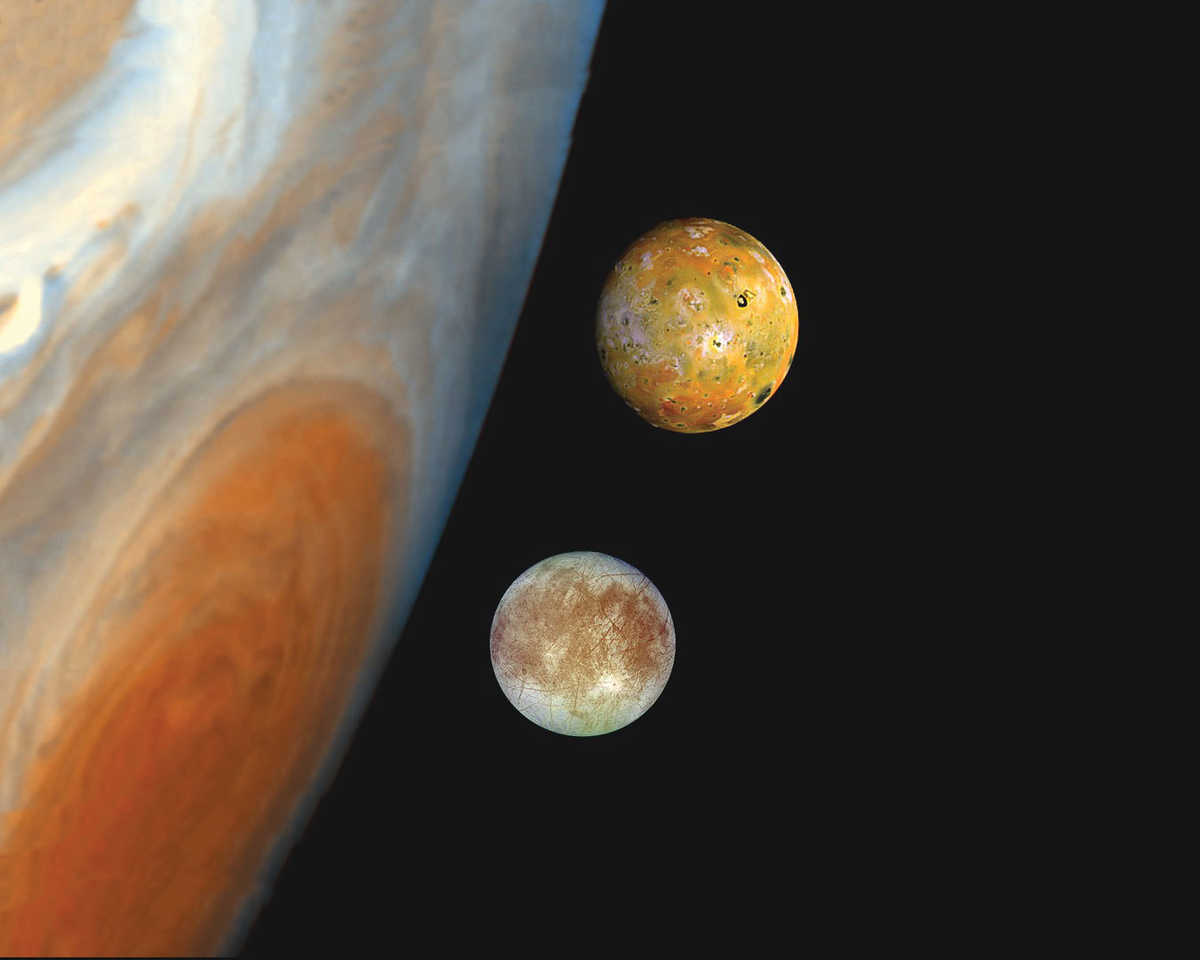
Courtesy of NASA
The surface of Jupiter's fourth largest moon Europa (immediately above in this composite image) was imaged at ultraviolet wavelengths, mapping concentrations of sulfur dioxide on its surface that likely came from Io (top), Jupiter's ultra-volcanic moon.
SwRI will further these studies using the Europa Ultraviolet Spectrograph (Europa-UVS), which will observe Jupiter's fourth largest moon from aboard NASA's Europa Clipper, scheduled to launch in 2024. Hidden beneath Europa's icy surface is a saltwater ocean containing nearly twice as much water as in all of Earth's oceans, making it one of the promising places in our solar system suitable for some form of life beyond Earth.
"Europa's relatively young surface is primarily composed of water ice, although other materials have been detected across its surface," said Dr. Tracy Becker, lead author of a paper describing these UV observations. "Determining whether these other materials are native to Europa is important for understanding Europa's formation and subsequent evolution."
Assessing the surface material can provide insights into the composition of the subsurface ocean. SwRI's dataset is the first to produce a near-global map of sulfur dioxide that correlates with large-scale darker regions in both the visible and UV wavelengths.
"The results were not very surprising, but we did get much better coverage and resolution than previous observations," said SwRI's Dr. Philippa Molyneux, a co-author of the paper. "Most of the sulfur dioxide is seen on the 'trailing' hemisphere of Europa. It's likely concentrated there because Jupiter's co-rotating magnetic field traps sulfur particles spewing from Io's volcanoes and slams them against the backside of Europa."
Io is another of Jupiter's largest moons but, in contrast, is considered the most volcanic body in the solar system. The intense radiation environment created by Jupiter's powerful magnetic field can cause chemical reactions between the water ice and the sulfur, creating sulfur dioxide on Europa's surface.
SwRI Deploys Automated Shuttle
As a leader in software and systems integration development for automated vehicles and robotics, SwRI has deployed an automated shuttle at its 1,500-acre campus.

Capable of ferrying up to 14 passengers, the shuttle uses algorithms, sensors, cameras and software that SwRI developed through internal research into automated driving. During operations, a human driver sits behind a steering wheel as an additional safety measure.
"It is rewarding for our engineers to take the very best technology that SwRI has developed to serve our clients and then embed it into a showcase vehicle that has a practical purpose in our backyard," said Ryan Lamm, director of SwRI's Applied Sensing Department.
Using SwRI's Ranger system, the vehicle autonomously drives unique routes around the grounds. Ranger is a localization tool that uses a ground-facing camera and automation software to precisely maintain its position to within two centimeters on a given route.
"Fully automated driverless vehicles are still several years away, but this shuttle proves that we are well on our way to such a future," said Dr. Steve Dellenback, vice president of SwRI's Intelligent Systems Division.
The shuttle's core functionality lies in SwRI's autonomy stack, a suite of tools utilizing proprietary machine learning algorithms, software and processing tools as well as cameras and sensors. SwRI has been developing the shuttle technology for over a year.
Classified as a low-speed vehicle (LSV) operating at less than 50 mph, the shuttle is ideal for closed campuses, such as the SwRI headquarters, or roads with lower speed limits. The Ranger system creates maps of the unique characteristics of the asphalt and recognizes features such as intersections, lanes and crosswalks. The operator can select from various mapped routes.
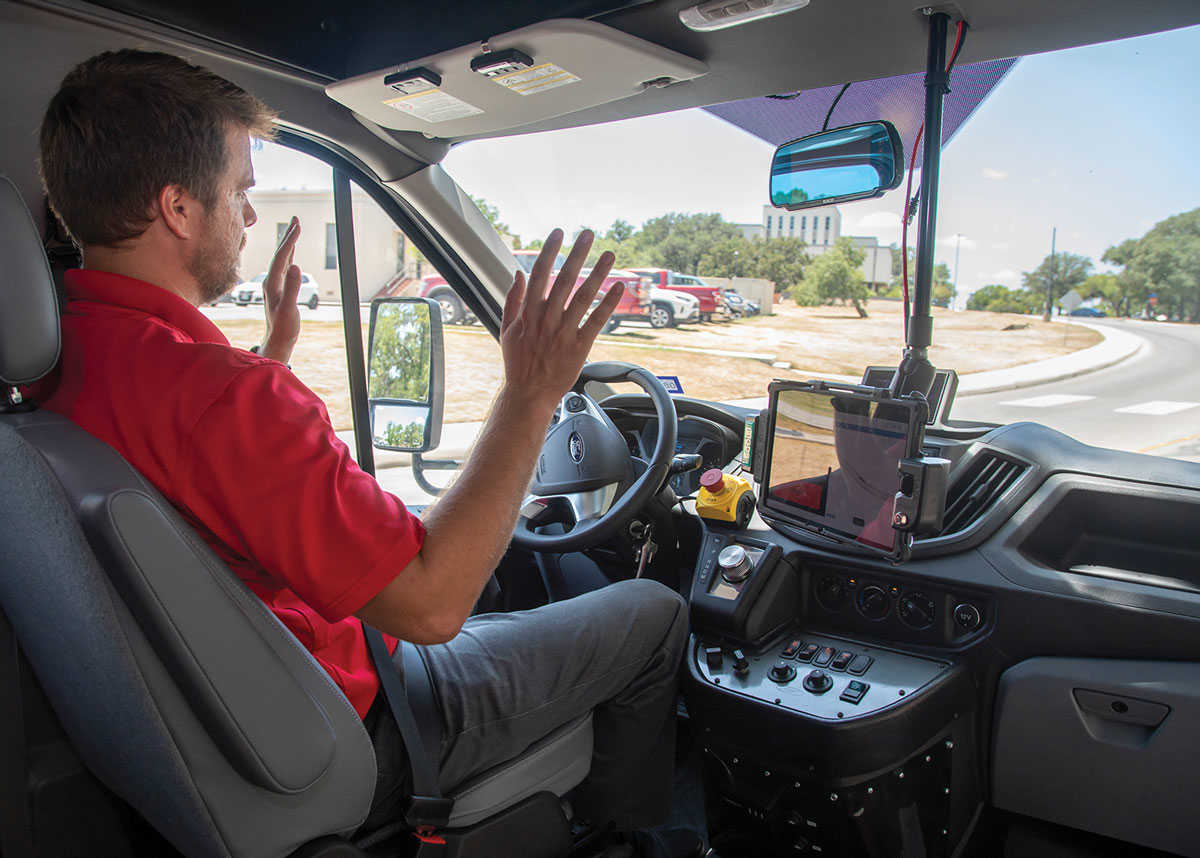
Alex Youngs demonstrates the self-driving capability of the SwRI automated shuttle, a 14-passenter, self-driving transport vehicle equipped with lidar, camera sensors and machine vision algorithms that enable automated driving. The shuttle autonomously navigates campus tours on pre-programmed routes, but a human driver is always behind the steering wheel for added safety.
It uses sensor systems and artificial intelligence to classify roadway signs, pedestrians, vehicles and other objects. SwRI has programmed the shuttle for various driving scenarios such as sharing the road with other vehicles, detecting dynamic objects such as cyclists, and determining right of way at intersections.
"The shuttle collects data every time it is on the road, allowing us to continually refine its algorithms to improve reactions in various situations," said Alexander Youngs, an SwRI senior research engineer who led development of the shuttle.
Additional capabilities include the ability to integrate and share data with intelligent transportation systems and other connected and automated vehicles. The shuttle can be deployed in a convoy of similar vehicles, taking traffic and congestion into consideration for improved mobility.
"This mid-size passenger vehicle presents future opportunities to improve mobility and access to transportation in neighborhoods where large buses cannot travel," said SwRI's Dan Rossiter. "We are thrilled to be able to say San Antonio not only has this capability at SwRI, but that we are helping to develop and deploy similar systems around the globe."
The shuttle is a working research platform, allowing SwRI to create and upgrade the vehicle with new automation capabilities and innovations. In addition to serving as a functional tour shuttle, it continues to serve as a test bed for other pilot programs for government and industry clients seeking to deploy similar shuttles on both closed campuses and open roads.
Watch a video of the shuttle at https://youtu.be/hoCwBnqQSx0.
Integrally Geared Supercritical CO2 Compander Wins R&D 100 Award
An SwRI-developed technology has won a prestigious R&D 100 Award. R&D World Magazine recognized SwRI and Hanwha Power Systems' Integrally Geared Supercritical CO2 "Compander" as being among the 100 most significant innovations for 2022.
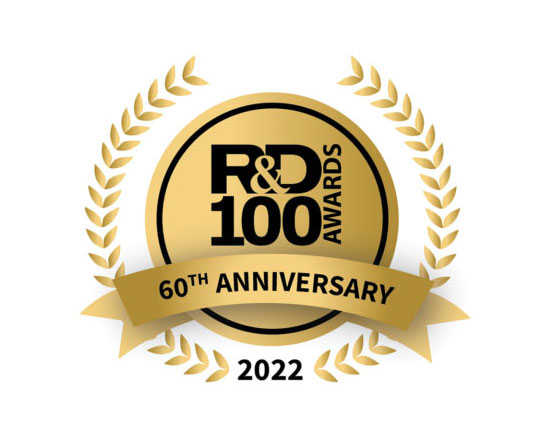
"Southwest Research Institute is committed to exploring energy solutions that will benefit humankind," said SwRI President and CEO Adam Hamilton, P.E. "I'm very proud that this work has been recognized as one of the most important innovations of the year."
SwRI worked with Hanwha to create the compander for a 10 MW-scale concentrated solar power (CSP) supercritical carbon dioxide (sCO2) plant application. It converts thermal energy from a heat generation source, such as CSP, to electrical energy. SwRI's Dr. Jason Wilkes and Dr. Tim Allison and Hanwha's Dr. Karl Wygant, Rob Pelton and Jon Bygrave led the development with support from the U.S. Department of Energy Office of Energy Efficiency and Renewable Efficiency.
The new compander operates in a high-efficiency power cycle that aims to make diverse, non-hydrocarbon-based power sources widely available and affordable. Closed-loop sCO2 power cycles are more cost-effective and efficient and use equipment that is a fraction of the size of conventional turbomachinery. These cycles can utilize heat from CSP, nuclear power, stored energy and waste heat recovery to generate electricity.
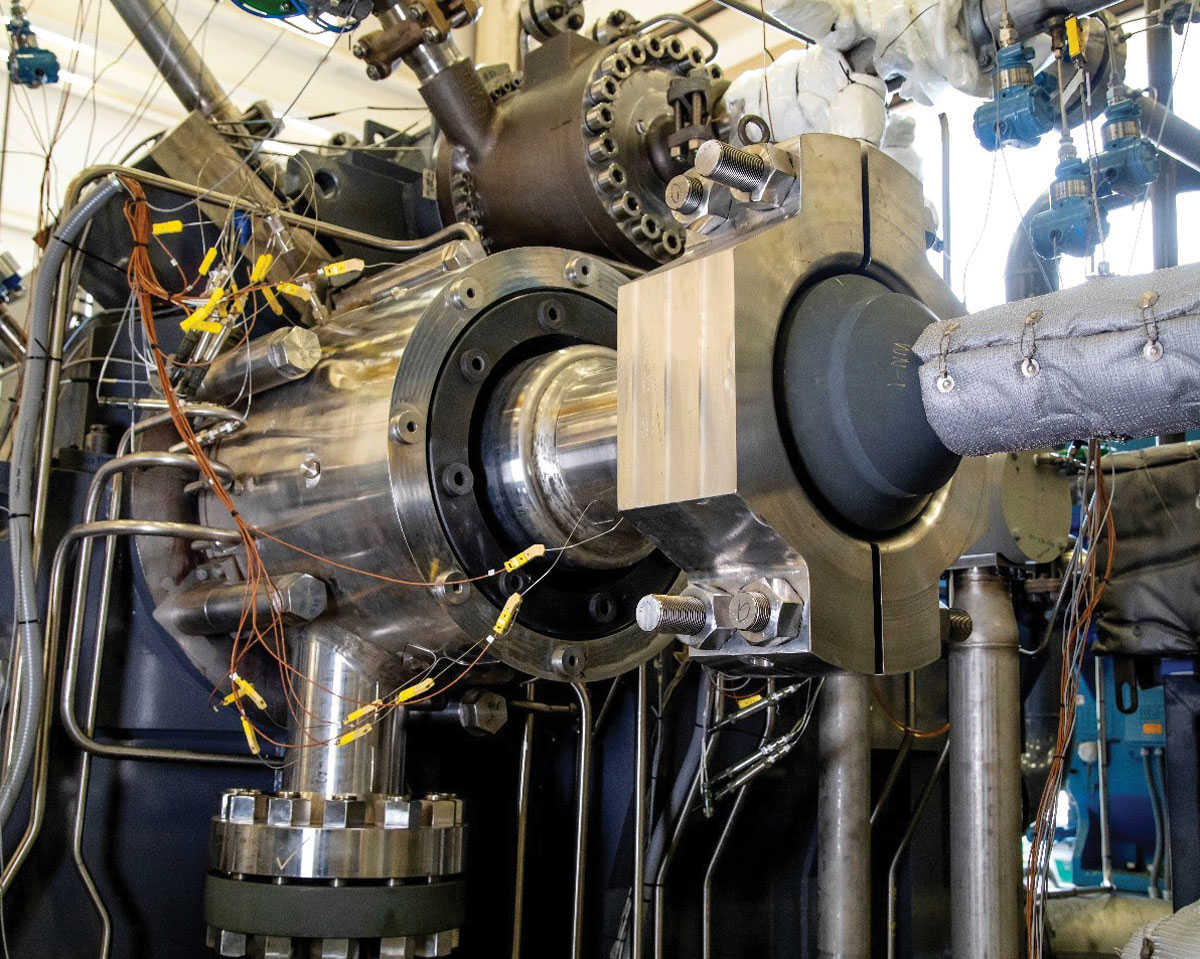
R&D World Magazine recognized SwRI and Hanwha Power Systems' Integrally Geared Supercritical CO2 Compander as being among the 100 most significant innovations for 2022. The compander converts thermal energy from a heat generation source, such as CSP, to electrical energy.
Using a low-cost, low-speed driver, the compander's multiple pinion shafts interact through a single bull gear to create a compact package. In addition, the integrally geared architecture allows each pinion to operate at different rotational speeds to optimize performance and easily allow for interstage cooling and turbine reheating to enhance both stage and cycle efficiency. The close integration of all turbomachinery elements into a single integrally geared design lends itself to powerblock modularization, which makes it suitable for a variety of applications such as CSP, waste heat recovery and carbon-neutral fossil fuel power plants.
The compander operates in the first functional MW-scale sCO2-compressor-driven turbine power cycle loop, operating at temperatures up to 720 C, which has already achieved several noteworthy records for turbomachinery, including the highest-pressure sCO2 dry-gas seal, integrally geared expander and integrally geared compressor in the world. It also features the highest-density integrally geared expander, radial expander and integrally geared compressor, as well as the highest temperature radial expander at pressures above 100 bar.
The R&D 100 Awards are among the most prestigious innovation awards programs, honoring the top 100 revolutionary technologies each year since 1963. Recipients hail from research institutions, academic and government laboratories, Fortune 500 companies and smaller organizations. Since 1971, SwRI has won 51 R&D 100 Awards.
SwRI Models Texas Groundwater Resources
Nearly a third of the planet's population relies on groundwater as its primary water supply. Because of global population growth and economic development, groundwater and surface water resources are coming under increasing stress in terms of quantity and quality.
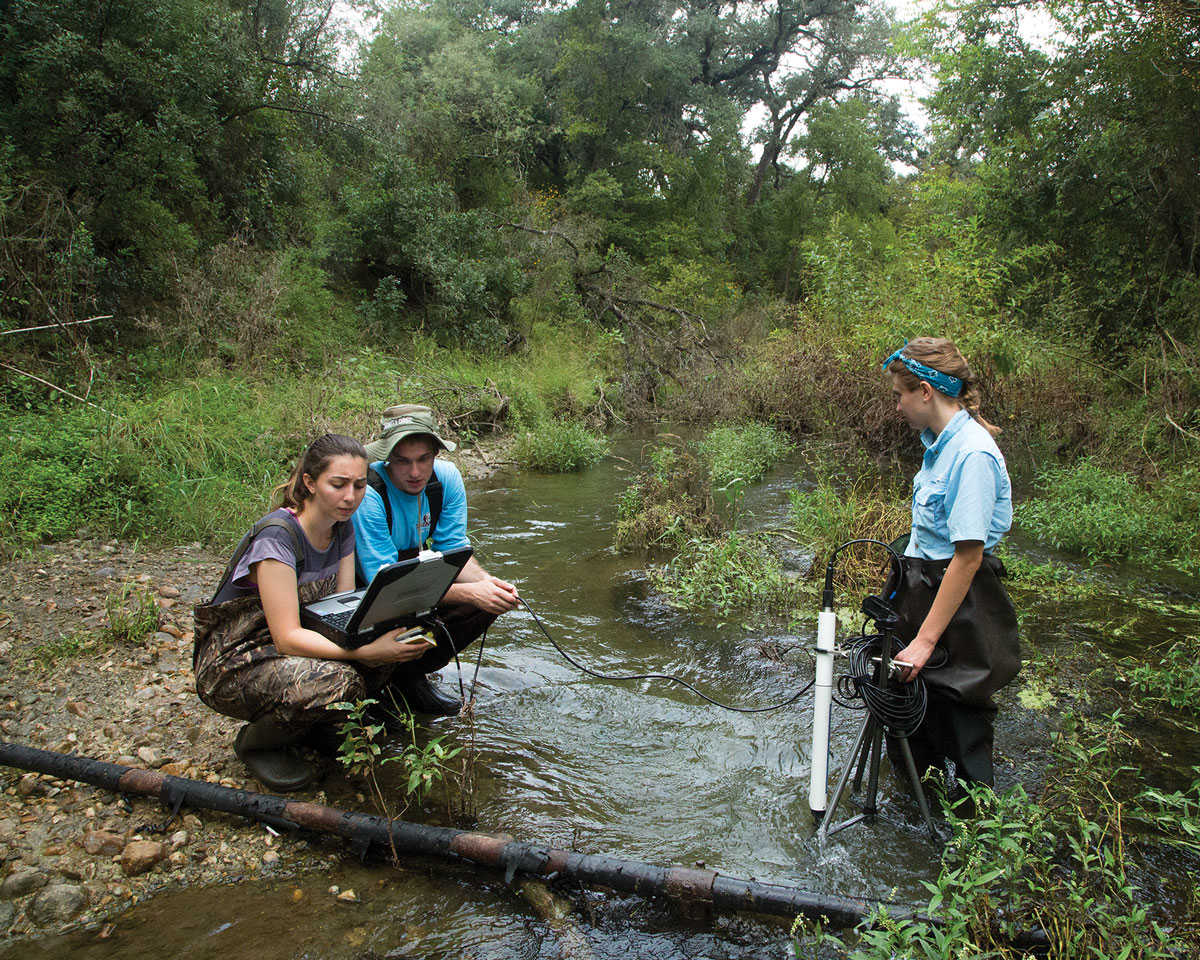
"So many people in Texas rely on groundwater to meet their water needs. Sustainable groundwater management is the future of Texas water, especially with increasing demands on these resources and possible changes in climate and weather patterns expected to occur in the near future," said SwRI Research Scientist Rebecca Nunu. "To ensure viability of these resources for generations to come, we need to understand the science and communicate findings to water resource managers and policy makers."
SwRI Lead Scientist Dr. Dimitrios Stampoulis proposes modeling a fusion of hydrologic simulations and satellite observations to improve estimates of depth changes in the water table. Implementing a four-layer version of the Variable Infiltration Capacity (VIC-4L) hydrologic model across the state of Texas could improve understanding of the whole system. This innovative approach would provide a comprehensive view of water resources, which would be particularly valuable to authorities in water-stressed regions of Texas. The valuable, high-resolution data provide a more reliable estimation of fluctuations in groundwater levels, which are vital to long-term management of these resources for the future.
"SwRI is expanding its capabilities and capacity to support the objectives of sustainable groundwater management for water resource managers in Texas," Nunu said.
Asteroid Bennu's Shifty Surface
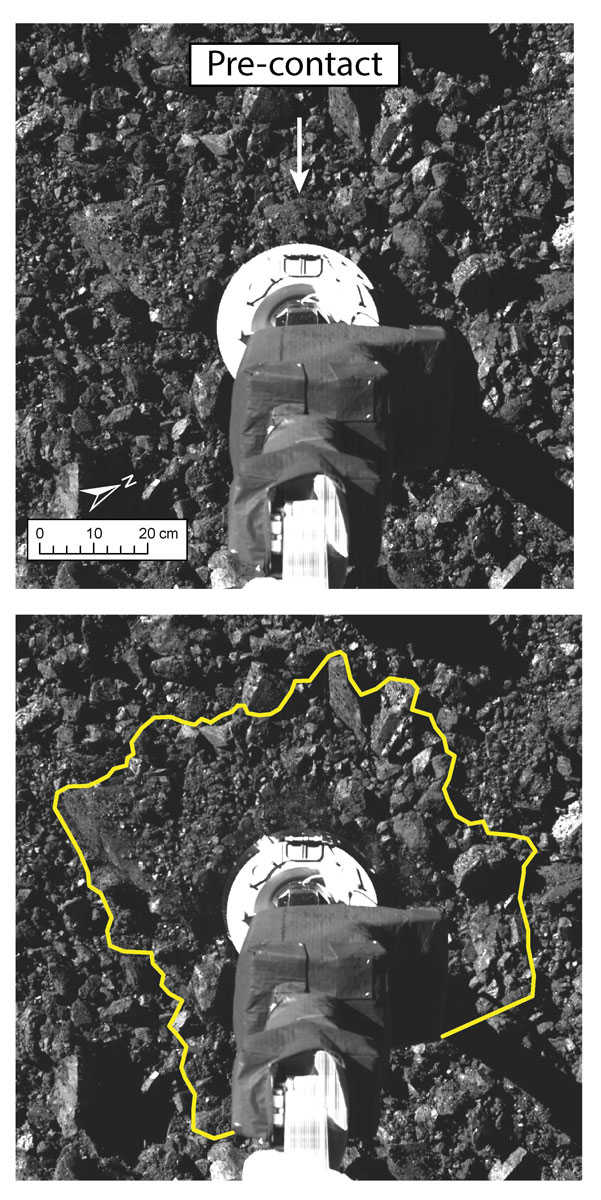
Courtesy of NASA/Goddard/University of Arizona
When NASA's OSIRIS-REx spacecraft collected samples from asteroid Bennu's surface in 2020, forces measured during the interaction provided scientists with a direct test of the poorly understood near-subsurface physical properties of rubble-pile asteroids. Now, an SwRI-led study has characterized the layer just below the asteroid's surface as composed of weakly bound rock fragments containing twice the void space as the overall asteroid.
"The low gravity of rubble-pile asteroids such as Bennu weakens its near-subsurface by not compressing the upper layers, minimizing the influence of particle cohesion," said SwRI's Dr. Kevin Walsh, lead author of a paper about this research published in the journal Science Advances. "We conclude that a low-density, weakly bound subsurface layer should be a global property of Bennu, not just localized to the contact point."
Fitting its designation as a "rubble-pile asteroid," Bennu is a spheroidal collection of rock fragments and debris 1,700 feet in diameter and held together by gravity. It is thought to have been formed after a collision involving a larger main-asteroid-belt object. Rocks are scattered across its heavily cratered surface, indicating that it has had a rough-and-tumble existence since being liberated from its much larger parent asteroid some millions or billions of years ago.
Before, during and after the sampling event, the Sample Acquisition Verification Camera (SamCam) of the OSIRIS-REx Camera Suite captured images looking at the Touch-and-Go Sample Acquisition Mechanism (TAGSAM) robotic arm.
These SamCam images showed the downward force as TAGSAM lifted a nearly 16-inch rock. Though strong enough to withstand breaking, the rock was re-oriented and small debris lofted off its surface. The mobility of these millimeter-scale particles under relatively weak forces suggests minimal cohesive bonding with the surface of the larger rock.
SwRI Demonstrates Novel Energy Storage System
SwRI has completed assembly and commissioning of the first-of-its-kind pumped thermal energy storage (PTES) demonstration facility. Long-duration, large-scale storage capabilities, like PTES, can help balance energy volatility and reliability issues allowing high market penetration of variable renewable energy resources such as solar and wind energy, creating solutions to help fulfill worldwide carbon reduction goals.
"One of the big problems that we face with renewable energy is balancing supply and demand," said SwRI Group Leader Dr. Natalie Smith, the project's lead investigator. "As the Sun goes down in the evening, many people are returning home from work, turning on lights and using other electronics. This mismatch between high power demand and solar availability creates grid volatility. We want new technologies to store solar and wind power so that it can be used when the Sun isn't shining and the wind isn't blowing."
A PTES system stores energy thermally in hot and cold tanks for later use. When excess wind or solar energy is being produced, the PTES runs a heat pump to make the hot storage tank hotter and the cold storage tank colder. Then, when energy demands exceed production, PTES runs as a heat engine converting the large temperature difference between the hot and cold stored energy into electricity.
"The full-scale PTES system offers high potential system performance up to 60% round-trip efficiency and can store energy for more than 10 hours," Smith said. "PTES is a promising, versatile technology that can be applied to many different energy sources without geological or geographical restrictions."
Under Department of Energy funding, SwRI developed a small-scale PTES demonstration system in collaboration with Malta Inc. that uses simple recuperated cycles for both modes of operation with air as the main working fluid. The facility design is similar in basic architecture and operation to full-scale technology and is intended to demonstrate system operability and controls strategies. Malta is developing a full-scale commercial system.
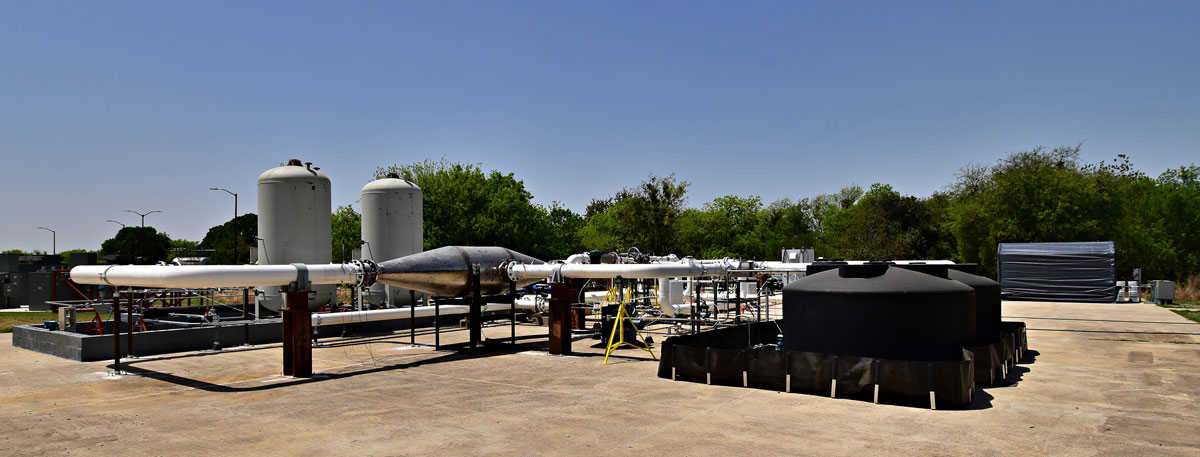
Identifying The Source Of Charon's Red Cap
SwRI scientists combined data from NASA's New Horizons mission with novel laboratory experiments and exospheric modeling to reveal the likely composition of the red cap on Pluto's moon Charon and how it may have formed. This first-ever description of Charon's dynamic methane atmosphere, its cold trapping and concurrent photodecomposition provide a fascinating glimpse into the origins of the moon's red spot.
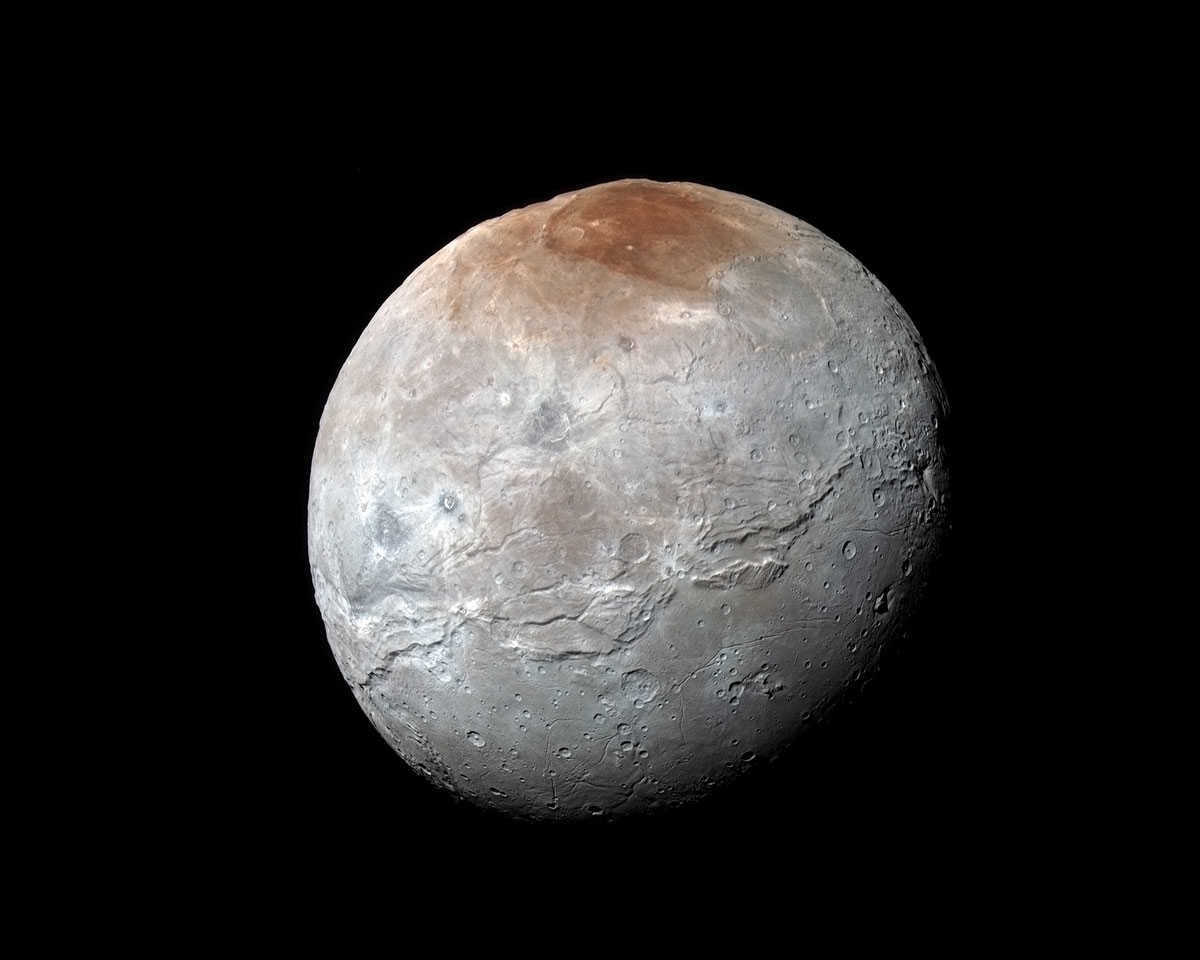
Soon after the 2015 encounter, New Horizons scientists proposed that a reddish "tholin-like" material at Charon's pole could be synthesized by ultraviolet light breaking down methane molecules. These are captured after escaping from Pluto and then frozen onto the moon's polar regions during its long winter nights. Tholins are sticky organic residues formed by chemical reactions induced by light, in this case the Lyman-alpha glow scattered by interplanetary hydrogen atoms.
The team realistically replicated Charon's surface conditions at SwRI's new Center for Laboratory Astrophysics and Space Science Experiments (CLASSE) to measure the composition and color of hydrocarbons produced on Charon's winter hemisphere as methane freezes beneath the Lyman-alpha glow. A team led by SwRI's Dr. Benjamin Teolis fed the measurements into a new atmospheric model of Charon to show methane accruing, breaking down and forming more complex hydrocarbons on Charon's polar zone.
"Our findings indicate that drastic seasonal surges in Charon's thin atmosphere as well as light breaking down the condensing methane frost are key to understanding the origins of Charon's red polar zone," said SwRI's Dr. Ujjwal Raut, lead author of a paper titled "Charon's Refractory Factory" in the journal Science Advances. However, Charon's color mystery remains as the model has polar zones primarily generating ethane, a colorless material.
"The solar wind may further process the Lyman-alpha-cooked polar frost to synthesize increasingly complex, redder materials responsible for the unique albedo on this enigmatic moon," Raut said.
Automating Aerospace Surface Prep
SwRI is introducing new automation technology that allows industrial robots to visually classify work and autonomously perform tasks.
Using this new technology, robots autonomously sand and prepare surfaces on aircraft and other machinery. The automation tool can be applied to grinding, painting, polishing, cleaning, welding, sealing and other industrial processes such as paint or coating removal or application.
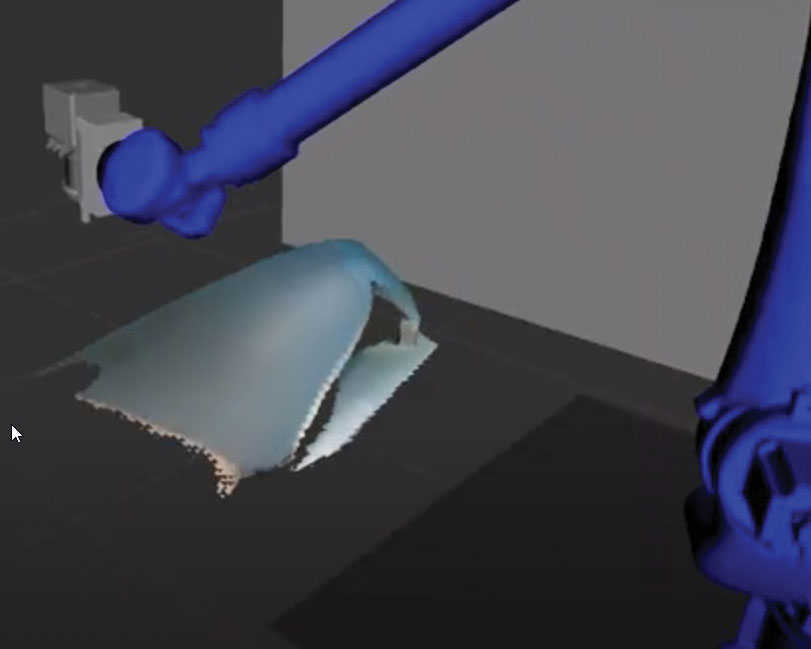
In this image, a robotic arm uses a 3D camera and machine vision software to scan and dynamically reconstruct contoured surfaces on aircraft parts. The robot uses 3D data to plan trajectories for surface preparation with sanders, grinders and other power tools.
"Our solutions increase process repeatability while improving part quality and decreasing rework," said Matt Robinson, a robotics manager at SwRI. "They also reduce human exposure to dangerous environments."
The system uses SwRI-developed machine learning algorithms and classification software that work in conjunction with open-source tools such as Scan-N-Plan™ and ROS 2, the latest version of an open-source robot operating system. Traditional robot programming can be slow and tedious.
Scan-N-Plan, a ROS-Industrial technology, uses machine vision to scan parts, creating 3D mesh data that robots use to plan tool paths and process trajectories while performing real-time process monitoring. SwRI works closely with the ROS-I project to maintain its software repository and expand open-source automation solutions.
"By leveraging these open-source tools with our custom software, we have developed a solution that intelligently classifies regions and textures of part surfaces in various stages of work," Robinson said.
The solution includes custom machine vision algorithms that enable robots to apply various media with varying pressure based on the amount of surface work needed. Feature-based processing is also enabled through additions that leverage semantic segmentation approaches to apply the right tool to the right feature, cutting versus sanding for instance.
"These are breakthroughs that will help prevent robots from over-sanding or over-grinding metal surfaces," said Paul Evans, director of SwRI's Manufacturing Technologies Department. "It is exciting to leverage the open-source community with our custom robotics engineering."
Punch Launch Preparations
More than 60 engineers and scientists gathered at SwRI in August to kick off the launch vehicle collaboration for NASA's Polarimeter to Unify the Corona and Heliosphere (PUNCH) mission. PUNCH, which will study the inception of the solar wind, has secured its ride into Earth orbit aboard a SpaceX Falcon 9 rocket, sharing a ride into space with NASA's Spectro-Photometer for the History of the Universe, Epoch of Re-ionization, and Ices Explorer (SPHEREx) mission.
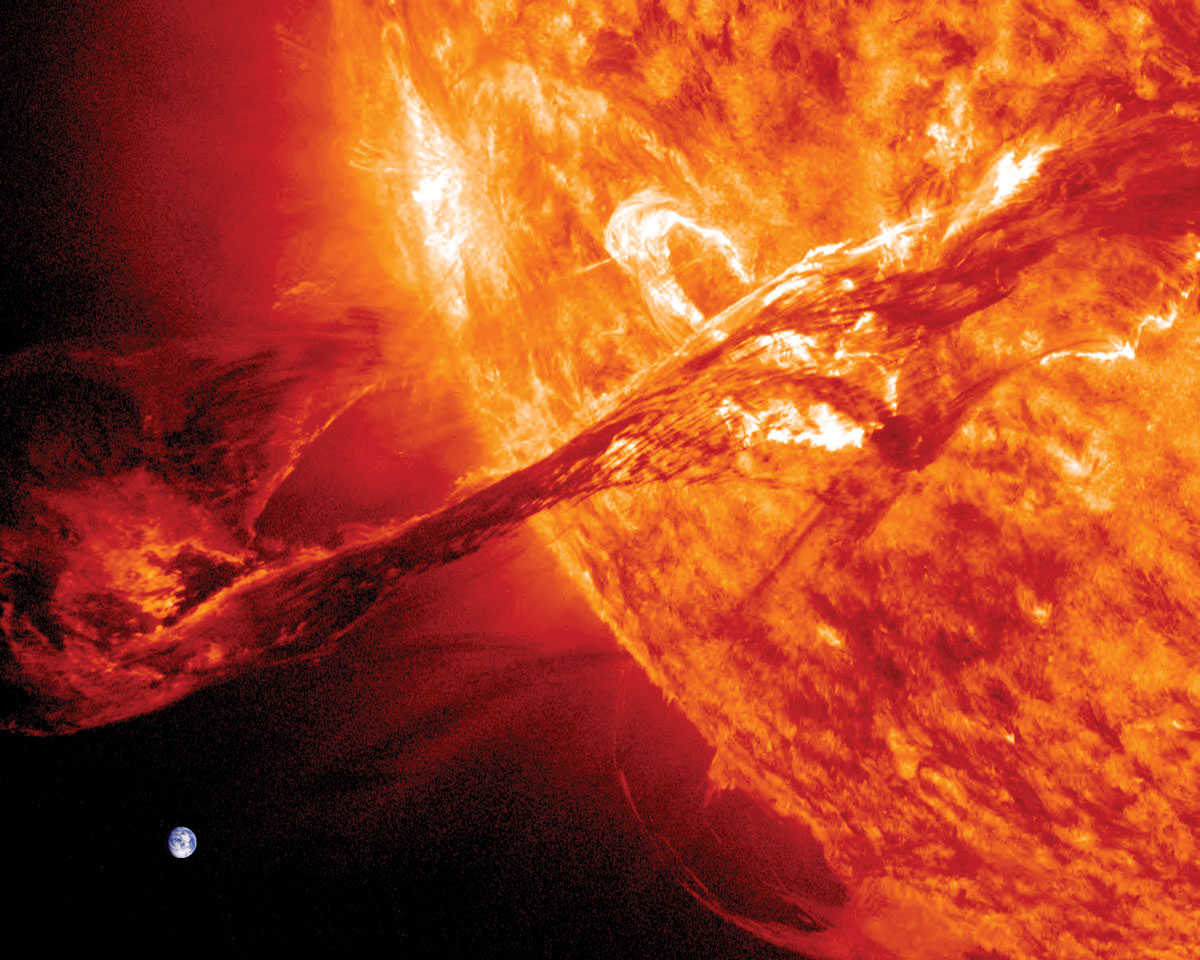
Courtesy of NASA Goddard Space Flight Center
Among other things, the SwRI-led PUNCH mission will image coronal mass ejections, such as this Aug. 31, 2012, event. The Earth is shown to scale, whereas its distance is not. The Earth is much farther from the Sun than indicated here.
PUNCH consists of four suitcase-sized satellites designed to study the Sun's outer atmosphere, the corona, and how it generates the solar wind. This continuous supersonic stream of charged particles fills the solar system, forming the bubble-like region of space known as our heliosphere. The spacecraft will also track coronal mass ejections — large eruptions of solar material that can drive significant space weather events near Earth — to better understand their evolution and develop new techniques for predicting such eruptions.
"It's great to have a definite launch date and vehicle, and we're looking forward to working with the SPHEREx team as we 'carpool' to orbit," said Craig DeForest, PUNCH principal investigator at Southwest Research Institute. "Rideshares are a great way to save money by taking advantage of each rocket's capability."
The PUNCH team can now finalize its schedule to meet the new launch date of no earlier than April 2025. This extended schedule will also mitigate post-pandemic supply chain challenges.
Following launch, the PUNCH satellites will spread out around Earth along the day-night line to create a continuous, complete view of the Sun's corona and the inner solar system. Three of the PUNCH satellites will carry identical Wide Field Imagers, which cover a significant portion of the sky around the Sun. The fourth PUNCH satellite carries a Narrow Field Imager coronagraph, which will study regions closest to the Sun.
Studying Oxidation In sCO2 Environments
SwRI and Sandia National Laboratories collaborated to examine the differences in oxide film growth on additively manufactured (AM) metals and wrought stainless steel in a supercritical carbon dioxide (sCO2) environment. More research is needed, but initial experiments showed the AM materials performed better, experiencing less oxidation than the wrought metal.
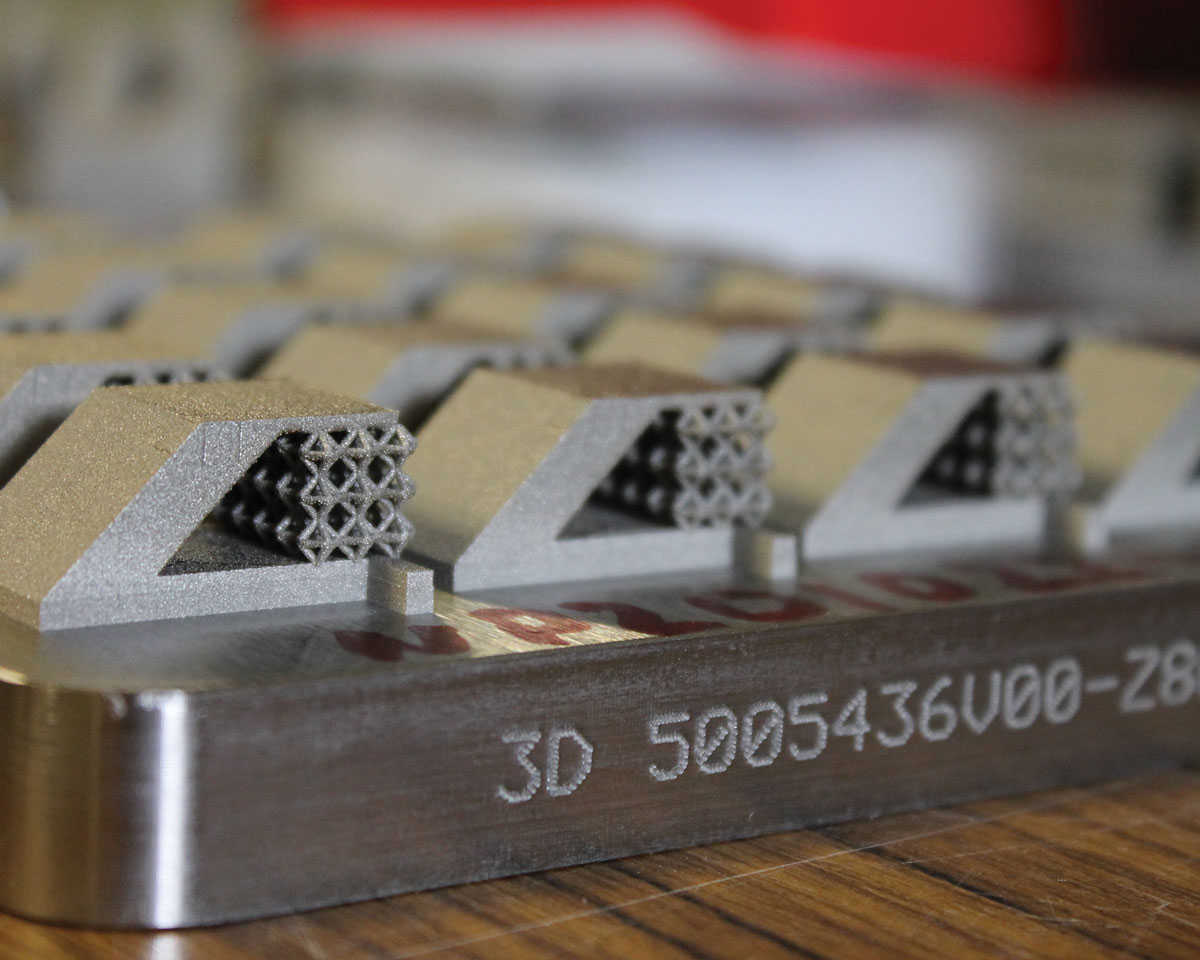
Courtesy of Sandia National Laboratories
Most thermal power stations currently use water as a thermal medium in steam turbines, but supercritical fluids are attractive alternatives. Carbon dioxide becomes supercritical when held above a critical temperature and pressure, which causes it to exhibit the properties of both gas and liquid. SwRI's Machinery Department is a worldwide leader in developing new power cycles that replace water with sCO2 to increase efficiency by upwards of 10 percent, while requiring smaller equipment and supporting decarbonization.
"The high temperatures and pressures of the sCO2 environment can make oxidation a concern for metal components," said SwRI Senior Research Engineer Dr. Florent Bocher.
Additive manufacturing uses 3D printing or rapid prototyping technology to build an item by layering plastic, metal and other materials following a computer-generated design. Because AM can create sturdy components with complex geometries, it is an attractive option to improve machinery, such as turbine blades or heat exchangers.
The team tested the durability of AM metals and traditional wrought stainless steel, exposing samples to a simulated sCO2 power cycle environment at 450 degrees Celsius and 76 bar, for two weeks. Sandia built and analyzed the AM materials.
While both types of metals experienced oxide growth, 72% of the wrought stainless steel surface oxidized compared to 54% of the AM material. The grain size and thickness of the oxide layer was also statistically larger and thicker for the wrought material. This research suggests that optimizing AM processes to create more durable articles for sCO2 applications should be explored.
New Evidence For Habitability In Enceladus's Ocean

The search for extraterrestrial life just got more interesting as a team of scientists including SwRI's Dr. Christopher Glein discovered new evidence for a key building block for life in the subsurface ocean of Saturn's moon Enceladus. New modeling indicates that Enceladus's ocean should be relatively rich in dissolved phosphorus, an essential ingredient for life.
The Cassini spacecraft discovered Enceladus's subsurface liquid water and analyzed samples as plumes of ice grains and water vapor erupted into space from cracks in the moon's icy surface.
"What we have learned is that the plume contains almost all the basic requirements of life as we know it," Glein said. "While the bioessential element phosphorus has yet to be identified directly, our team discovered evidence for its availability in the ocean beneath the moon's icy crust."
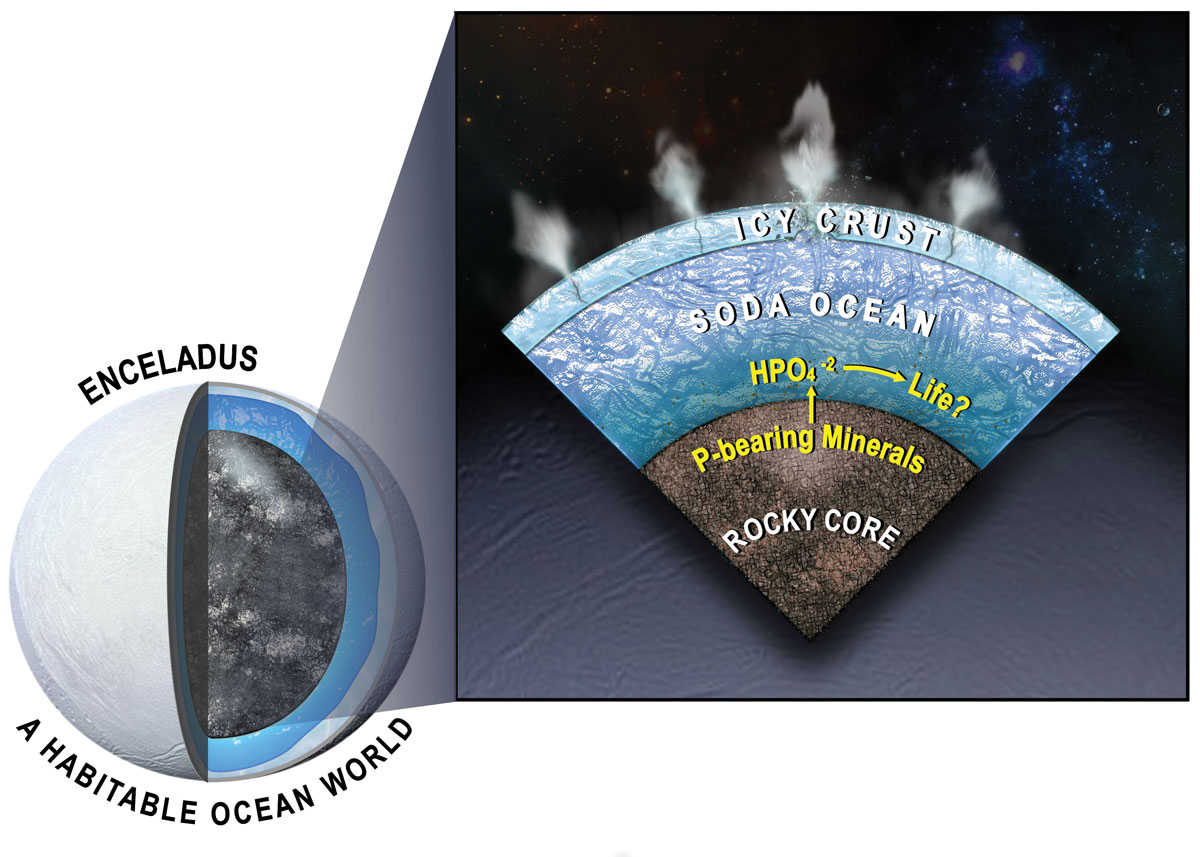
Phosphorus in the form of phosphates is vital for all life on Earth. It is essential for the creation of DNA and RNA, energy-carrying molecules, cell membranes, bones and teeth in people and animals, and even the sea's microbiome of plankton. Team members performed thermodynamic and kinetic modeling that simulates the geochemistry of phosphorus based on insights from Cassini about the ocean-seafloor system on Enceladus.
"The underlying geochemistry has an elegant simplicity that makes the presence of dissolved phosphorus inevitable, reaching levels close to or even higher than those in modern Earth seawater," Glein said. "What this means for astrobiology is that we can be more confident than before that the ocean of Enceladus is habitable. Now we need to get back to Enceladus to see if a habitable ocean is actually inhabited."

